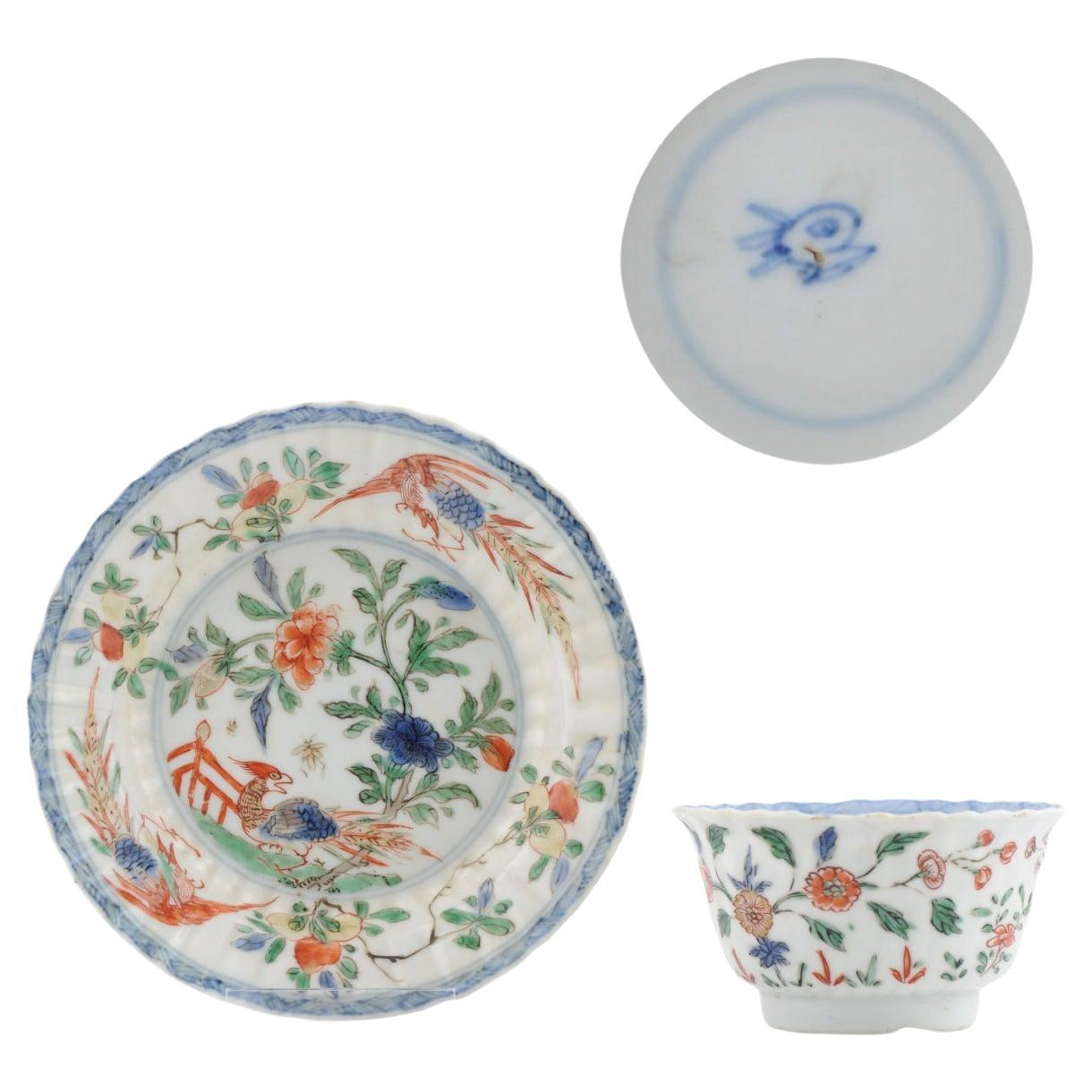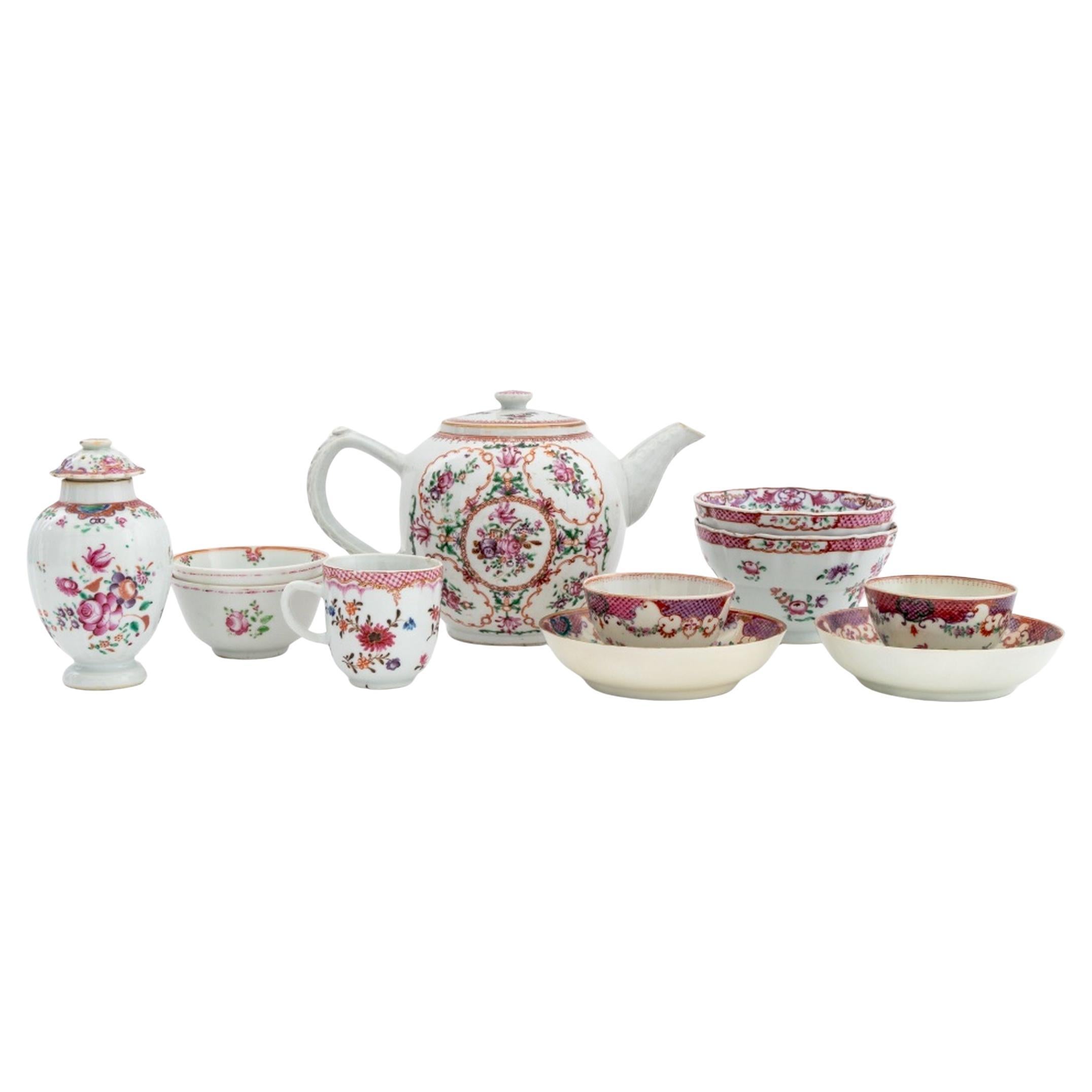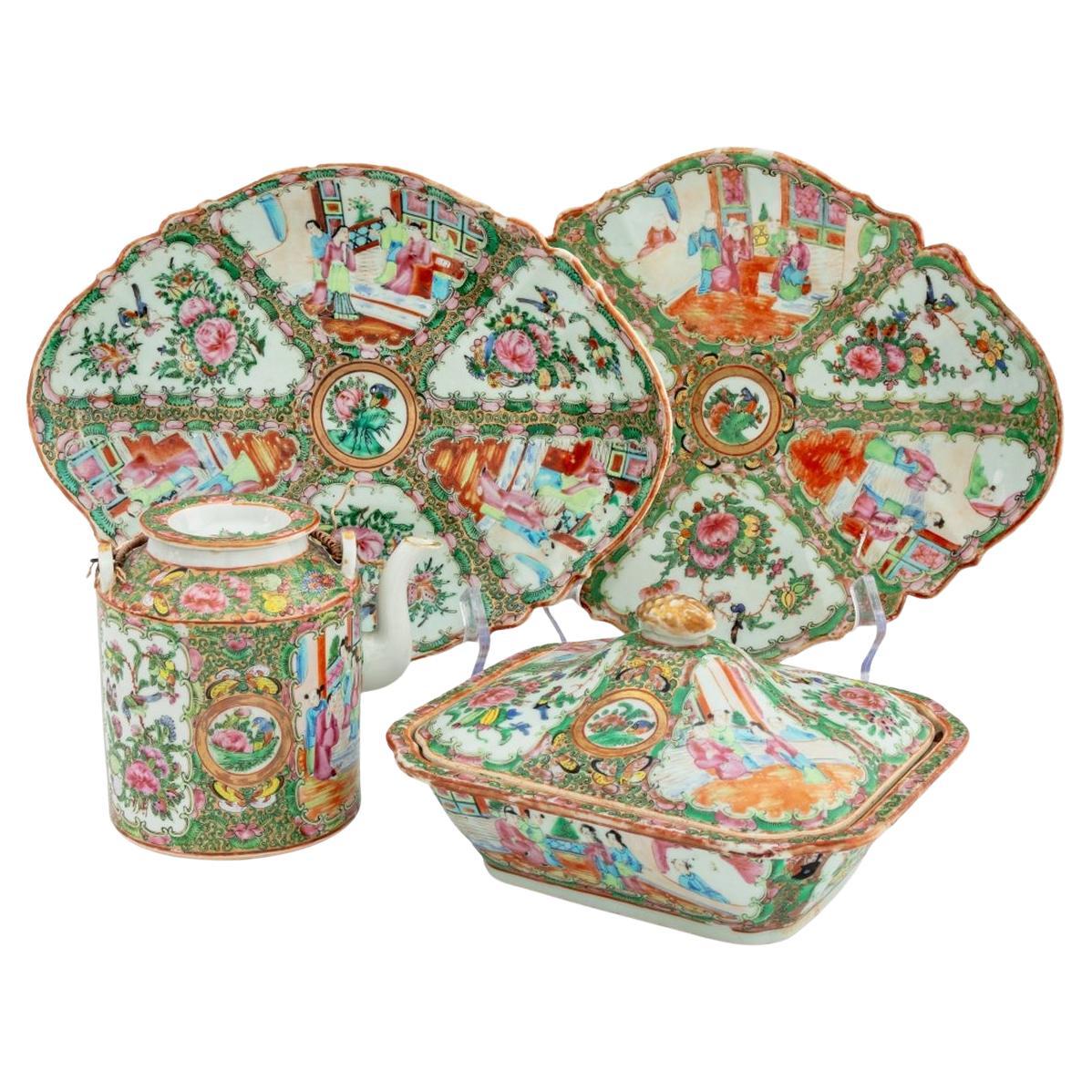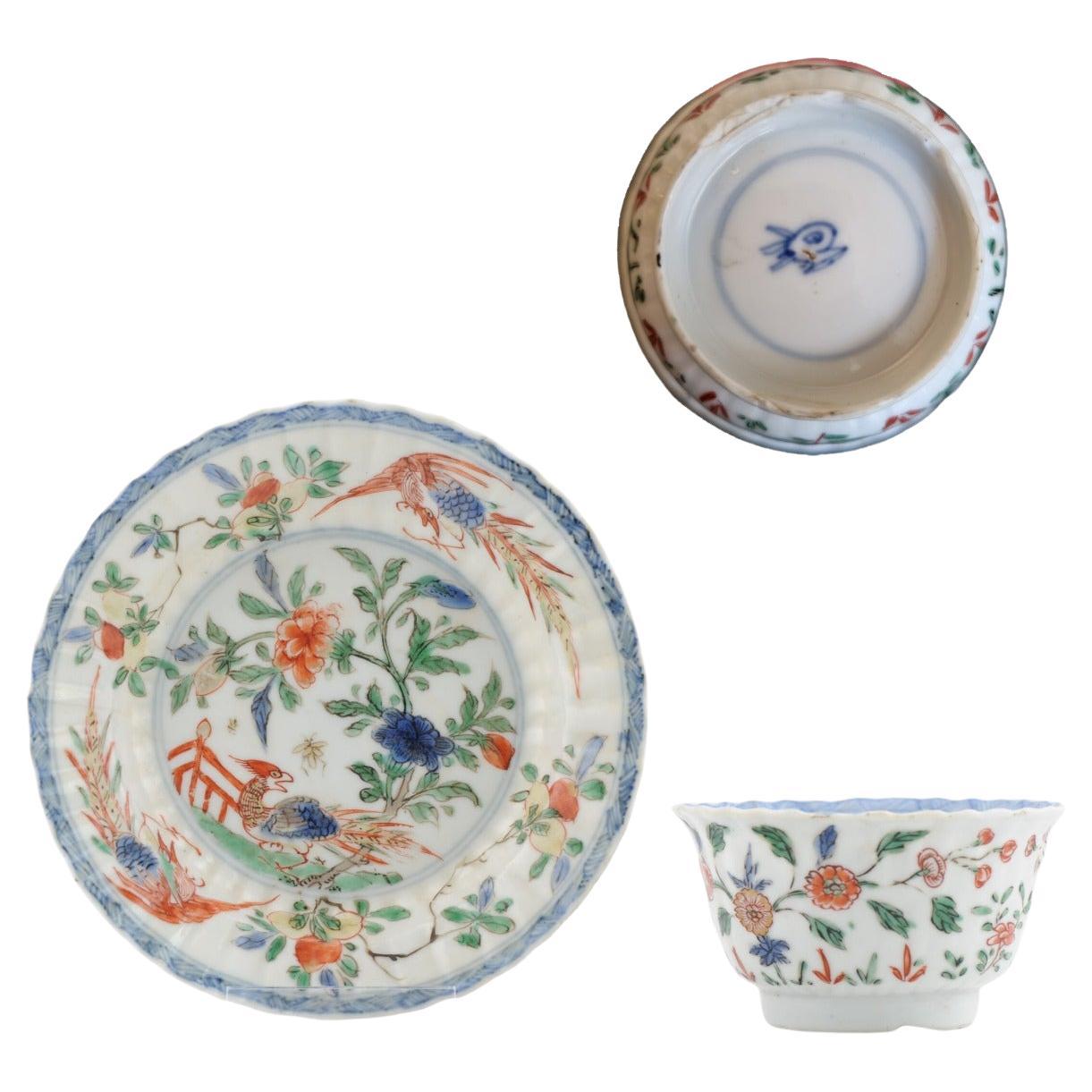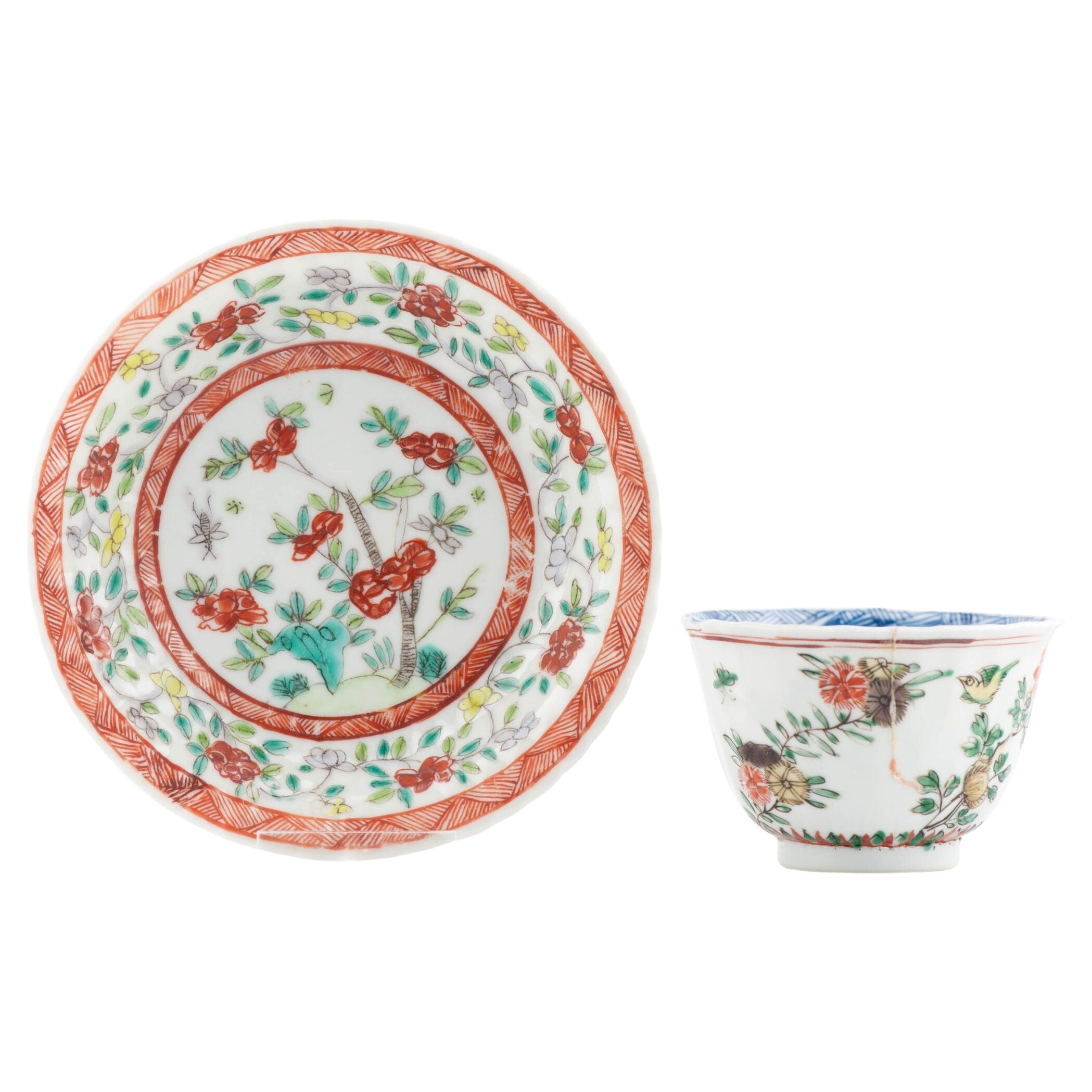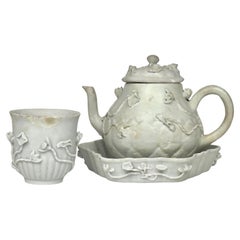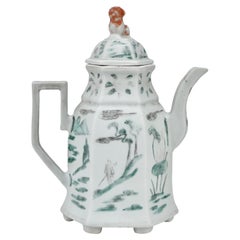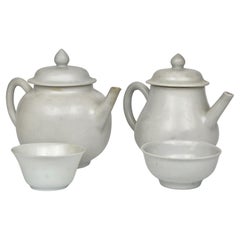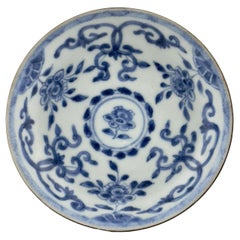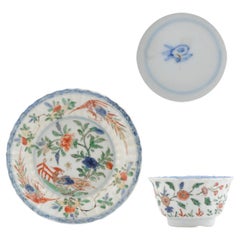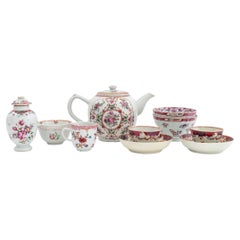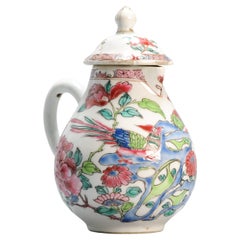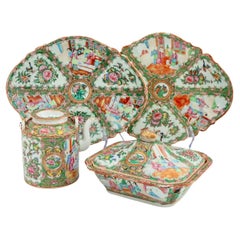Items Similar to Rare Famille Rose/Verte Shipwreck Ceramics Set, Qing Dynasty, Yongzheng Era
Want more images or videos?
Request additional images or videos from the seller
1 of 14
Rare Famille Rose/Verte Shipwreck Ceramics Set, Qing Dynasty, Yongzheng Era
$2,660per set
$3,800per set30% Off
£2,046.25per set
£2,923.21per set30% Off
€2,375.11per set
€3,393.02per set30% Off
CA$3,751.24per set
CA$5,358.91per set30% Off
A$4,202.01per set
A$6,002.88per set30% Off
CHF 2,207.05per set
CHF 3,152.93per set30% Off
MX$51,095.14per set
MX$72,993.06per set30% Off
NOK 27,948.46per set
NOK 39,926.37per set30% Off
SEK 26,530.60per set
SEK 37,900.86per set30% Off
DKK 17,726.39per set
DKK 25,323.42per set30% Off
About the Item
Beautiful 'chickens and flowers' painted rare familie rose/verte ceramic set from Qing dynasty. Excavated from cargo underwater from the early Qing dynasty. It is presumed to originate from the Yongzheng period Ca Mau Shipwreck. On the back of the baluster vase, there are traces of marine organisms. This type of famille porcelain excavated from the Ca Mau ship is very rare and valuable, as the quantity is limited and most of the excavated familie pieces are in poor condition.
Period : Qing Dynasty, Yongzheng Period
Production Date : 17-18th century
Made in : Jingdezhen
Found/Acquired : Southeast Asia , South China Sea from shipwreck
Size : Right Baluster Vase - 16 cm (Height) / Middle Ewer - 22cm (Height)
Condition : Excellent (Slightly worn and marine life traces)
Reference : Double checked with reference to the original catalogues
1) Tau Co Ca Mau(The Ca Mau Shipwreck) Catalogue 2002 / The National Museum of Vietnamese History
2) THE CA MAU SHIPWRECK PORCELAIN : from the Collection of Dr.Zelnik , 2000
3) Sotheby’s Amsterdam, 2007 : Made In Imperial China / Sotheby's
4) Asian Ceramic Found along Maritime Silk Route / National Maritime Museum of Korea
* The Ca Mau Cargo
The Ca Mau Cargo refers to a Chinese cargo sunken sometime between 1723 and 1735 off the coast of Vietnam’s farthest point in the South China Sea, discovered by Vietnamese fishermen in 1998. It is believed the ship was a Chinese merchant’s cargo on its way from Canton (Guangzhou) to Batavia when it caught fire and sank. The merchant had ordered the goods on board for Dutch traders, who had limited access to China and its ports.
* Porcelain for the European Market
The Ca Mau Cargo consisted of numerous types of porcelain, chinaware and blue and white wares, all designed for the European market. Blue and white ceramics recovered from the cargo appear decorated with the so-called ‘Scheveningen landscape’, also known as ‘Deshima décor’. This motif usually depicted a traditional Dutch fishing village, executed in Chinese style. Chinese wares with Western motives were extremely popular and made to order and were known as ‘China de commande’.
- Dimensions:Height: 8.67 in (22 cm)Diameter: 5.52 in (14 cm)
- Sold As:Set of 5
- Style:Qing (Of the Period)
- Materials and Techniques:Ceramic,Glazed
- Place of Origin:
- Period:
- Date of Manufacture:Early 18th century
- Condition:Minor fading. Surface weathering from centuries underwater.
- Seller Location:seoul, KR
- Reference Number:1stDibs: LU9577243208912
About the Seller
4.8
Gold Seller
Premium sellers maintaining a 4.3+ rating and 24-hour response times
Established in 1999
1stDibs seller since 2023
38 sales on 1stDibs
Typical response time: <1 hour
- ShippingRetrieving quote...Shipping from: seoul, Korea South
- Return Policy
Authenticity Guarantee
In the unlikely event there’s an issue with an item’s authenticity, contact us within 1 year for a full refund. DetailsMoney-Back Guarantee
If your item is not as described, is damaged in transit, or does not arrive, contact us within 7 days for a full refund. Details24-Hour Cancellation
You have a 24-hour grace period in which to reconsider your purchase, with no questions asked.Vetted Professional Sellers
Our world-class sellers must adhere to strict standards for service and quality, maintaining the integrity of our listings.Price-Match Guarantee
If you find that a seller listed the same item for a lower price elsewhere, we’ll match it.Trusted Global Delivery
Our best-in-class carrier network provides specialized shipping options worldwide, including custom delivery.More From This Seller
View AllWhite with Overglaze Enamel Tea Set Circa 1725, Qing Dynasty, Yongzheng Reign
Located in seoul, KR
The wear on its surface is a testament to its age and underwater journey, giving it a unique patina that only time and nature can create. The overglaze enamel decoration that adorns ...
Category
Antique 1720s Vietnamese Qing Antiquities
Materials
Ceramic, Porcelain
Famille Rose/Verte Ewer, Qing Dynasty
Located in seoul, KR
Beautiful flowers and scenary painted familie rose/verte ceramic ewer from Qing dynasty. Excavated from cargo underwater.
This piece is from the early Qing dynasty, and it is not cl...
Category
Antique 17th Century Vietnamese Qing Antiquities
Materials
Ceramic
$838 Sale Price
35% Off
White with Overglaze Enamel Tea Set Circa 1725, Qing Dynasty, Yongzheng Reign
Located in seoul, KR
The wear on its surface is a testament to its age and underwater journey, giving it a unique patina that only time and nature can create. Traces of once-painted nature and chicken il...
Category
Antique 1720s Vietnamese Qing Antiquities
Materials
Ceramic, Porcelain
Flower Pattern Blue And White Tea Set c 1725, Qing Dynasty, Yongzheng Reign
Located in seoul, KR
This saucer displays central floral motifs surrounded by a variety of beautifully decorated botanical and floral patterns, indicative of classic East Asian ceramic artistry.
Period ...
Category
Antique 1720s Vietnamese Qing Ceramics
Materials
Ceramic
$354 Sale Price
40% Off
Passing Boat and Bridge Pattern Tea Set, Circa 1725, Qing Dynasty, Yongzheng Era
Located in seoul, KR
With a medallion of two boats sailing together, passing an island on which a solitary figure stands by or on a bridge, the rim with a narrow heringbone pattern, the reverse glazed ca...
Category
Antique 1720s Vietnamese Qing Antiquities
Materials
Ceramic
$392 Sale Price / set
20% Off
Chinoiserie Teabowl Set Circa 1725, Qing Dynasty, Yongzheng Reign
Located in seoul, KR
The interior of the cups is adorned with intricate designs inspired by nature, such as flowers, trees, and fish. They are skillfully arranged to create a focal point at the base of e...
Category
Antique 1720s Vietnamese Chinoiserie Ceramics
Materials
Ceramic, Porcelain
$973 Sale Price
30% Off
You May Also Like
Antique Kangxi Chinese Famille Verte Tea Set Top, 18th Century
Located in Amsterdam, Noord Holland
Kangxi period, Famille Verte. Stunning scene Rare set with floral and bird scene.
The cup with an unusual Hare Mark.
Chinese café au lait porcelain is a type of Chinese porcelain t...
Category
Antique 18th Century Chinese Qing Tea Sets
Materials
Porcelain
$1,790 Sale Price / set
20% Off
Chinese Export Famille Rose Porcelain Teaware, 11
Located in Astoria, NY
Collection of 11 Chinese Export Famille Rose Porcelain Teaware Articles, Qianlong Period, circa 1760, comprising: covered tea canister, bullet form teapot with lid, pair of large tea...
Category
Antique 1760s Chinese Qing Ceramics
Materials
Porcelain
Antique Ca 1740-1750 Chinese Porcelain Qianlong Creamer Famille Rose
Located in Amsterdam, Noord Holland
A very nicely decorated creamer/jug. Yongzheng / Qianlong period. Great decoration in Famille Rose / Fencai
Condition
Lid with restuck knot and also some damage to knot. Rim lid wi...
Category
Antique 18th Century Qing Decorative Dishes and Vide-Poche
Materials
Porcelain
$826 Sale Price
20% Off
Chinese Rose Medallion Porcelain Articles, 4
Located in Astoria, NY
Collection of Four Articles of Chinese Rose Medallion Porcelain, comprising: teapot, covered tureen with decorated interior, and two navette-shaped footed dishes. Largest: 2.75" H x ...
Category
20th Century Chinese Qing Ceramics
Materials
Porcelain
$1,450 / set
Antique Kangxi Chinese Lait Famille Verte Tea Set Bird Butterfly, 18th Century
Located in Amsterdam, Noord Holland
Kangxi period, cafe au lait and Famille Verte. Stunning scene of different kind of animals and flowers. Both marked at the base. Rare set!
Chinese café au lait porcelain is a type o...
Category
Antique 18th Century Chinese Qing Tea Sets
Materials
Porcelain
$984 Sale Price / set
20% Off
Antique Kangxi Porcelain Chinese Red Famille Verte Tea Set Top, 18th Century
Located in Amsterdam, Noord Holland
Kangxi period, Red Famille Verte. Stunning scene Rare set!
Additional information:
Material: Porcelain & Pottery
Type: Tea/Coffee Drinking: Bowls, Cups & Teapots Tea Bowls & Cups
R...
Category
Antique 18th Century Chinese Qing Tea Sets
Materials
Porcelain
$883 Sale Price / set
20% Off
More Ways To Browse
18th Century Famille Rose
Shipwreck Antique
Rare Antique Asian Vases
Qing Dynasty Imperial
Canton Blue And White
Canton Rose
Antique Korean Porcelain
Blue Rose Famille
Sothebys 2000
Porcelain Ewer
Canton Vase
Chinese Canton Rose Porcelain
Cargo Porcelain
Rose Canton Porcelain
Famille Rose Set
Shipwreck China
Blue And White Canton China
Antique Rose Canton China
